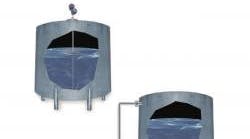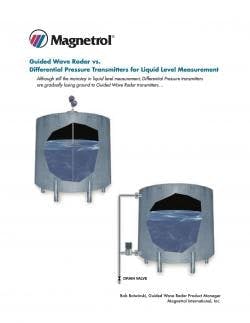Although DP transmitters presently remain the dominant instrument for level measurement, their worldwide market share is expected to steadily erode in the presence of growing demand for the newer level measurement technologies. Manufacturers, keenly aware of the market shift at play, are allocating significant research and development assets to ensure that these newer technologies continue to offer additional performance, functionality, affordability, and ease of use.
Leading the assault is GuidedWave Radar (GWR), which is among the most versatile of technologies now being used for liquid level measurement. It is also one of the newest and fastest growing technologies, having gained tremendous acceptance due to the significant advantages it offers over other level measurement devices. Not only does GWR usually outperform conventional level measurement technologies, a GWR radar transmitter is extremely compact and easy to install and operate. The latest generation of GuidedWave Radar transmitters is a formidable contender as a potential market-wide replacement to the universally entrenched differential pressure transmitters.



